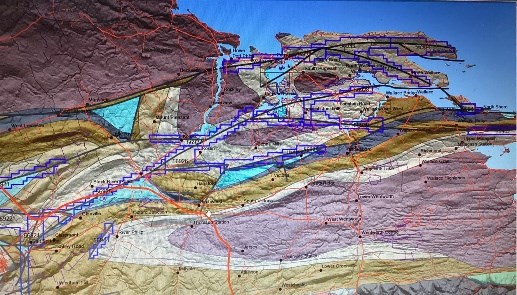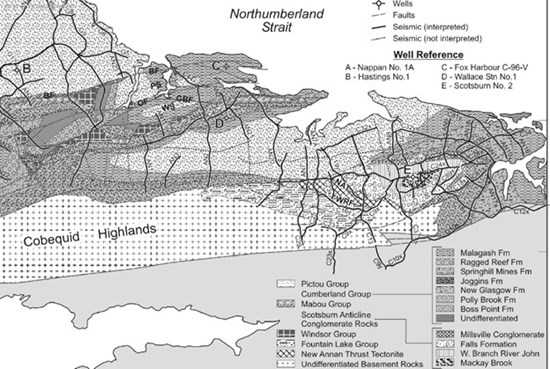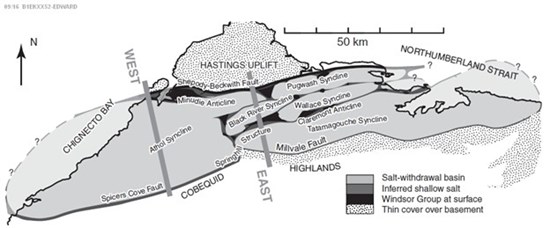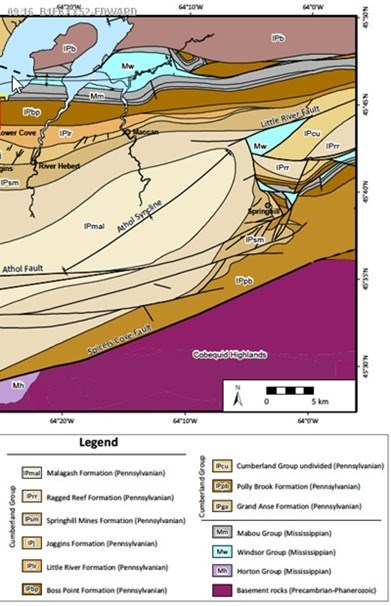
QMET Confirms Second Major Natural Hydrogen Discovery in Nova Scotia’s Springhill Region
Q Precious & Battery Metals Corp. (CSE: QMET) has confirmed a second significant natural hydrogen zone in Nova Scotia, building on its earlier breakthrough in the Apple Shulie Corridor. The new results come from a soil gas survey in the Springhill area, conducted in partnership with Quebec Innovative Materials Corp. (CSE: QIMC) and Institut National de la Recherche Scientifique (INRS).
From 230 soil gas samples collected, 17 returned hydrogen values above 400 ppm, including three above 700 ppm, with a peak reading of 1,652 ppm. These concentrations reinforce Nova Scotia’s emergence as a district-scale hydrogen hub and expand QMET’s strategic position within the region.
CEO Richard Penn highlighted the discovery as another milestone for QMET and its partners, noting that even this partial survey strongly supports the company’s exploration model. Despite wildfire-related access limitations, Springhill has already emerged as a key target, with further survey work planned for Fall 2025.
With two confirmed zones — Apple Shulie and Springhill — QMET is positioning itself as a leader in Nova Scotia’s rapidly advancing hydrogen sector. Together with QIMC and INRS, the company continues to advance a district-wide exploration strategy that could establish Canada as a global natural hydrogen leader.
Full press release is attached below:
Vancouver, British Columbia--(Newsfile Corp. - September 17, 2025) - Q Precious & Battery Metals Corp. (CSE: QMET) (OTC Pink: BTKRF) (FSE: 0NB) ("QMET" or the "Company") is pleased to announce the confirmation of a second major natural hydrogen discovery in Nova Scotia. Building on its breakthrough results in the Apple Shulie Corridor, QMET and its partners — Quebec Innovative Materials Corp. (CSE: QIMC) and Institut National de la Recherche Scientifique ("INRS") — have now identified a significant new zone in the Springhill area.
The Springhill program collected 230 soil gas samples, returning 17 results above 400 ppm hydrogen (H₂), including three over 700 ppm (750, 778), and a peak of 1,652 ppm.
These findings complement QIMC's recent discoveries and further reinforce Nova Scotia's emergence as a district-scale natural hydrogen hub in North America, while underscoring QMET's expanding strategic footprint in this rapidly advancing sector.
Richard Penn, CEO of QMET, commented:
"The confirmation of a second major hydrogen zone at Springhill is another milestone in establishing Nova Scotia as a natural hydrogen hub in North America. Despite a partial survey, the results are strong, and this discovery strengthens QMET's district-scale position. Alongside our partners QIMC and INRS, we are proud to be advancing exploration at the forefront of this new energy frontier, unlocking the full potential of this emerging resource."
Geological Context
QMET hold 31 licenses along the northern margin of the Cumberland Basin within the Springhill-Salt Springs-Oxford-Pugwash-Fox Harbour-Wallace region. (see Figure 1) The licenses are generally located on the north limb of the Tetagouche Syncline along steeply dipping faults generally located at the boundaries of horst-like uplifts or within axial zones of narrow anticlines that separate intervening synclines. Windsor Group sediments hosting thick interbeds of salt and evaporitic formation outcrop at the margins of the synclines (see Figure 3).

The region hosting the QMET licenses has been explored for oil and gas potential reservoirs in the last decade. Considerable reflective seismic studies had been undertaken in the region. Several wells were drilled. These wells aided in identifying the strongest reflective horizons and correlating them to contacts between certain stratigraphic formational units. These reflective profiles provide additional information with respect to the underlying structures which are now shown to differ substantially what is seen at surface. Faults identified cutting formations are observed to stop at overlying formations. It is possible to reconstruct different deformational periods and different ages of faulting. These studies are preliminary but will be of great importance in extracting how fluids move in the basins and where reservoirs may form.



While wildfire alerts limited access to parts of the region, these early results already confirm Springhill as a second major zone. QMET partners, QIMC and INRS, plan to return to the Springhill-Salt Springs-Oxford-Pugwash-Fox Harbour-Wallace corridor in the Fall 2025 to complete the survey.
About Q Precious & Battery Metals Corp. (QMET)
QMET (CSE: QMET) is Canadian natural resource exploration company with 100% owned mineral projects in Quebec and Nova Scotia targeting critical and precious metals as well as Clean Natural White Hydrogen. Flagship projects include the LaCorne South Critical Minerals Project and the newly acquired Matane in Quebec, and Colchester Natural Hydrogen Projects, in Nova Scotia, in a collaboration with Quebec Innovative Materials Corp (CSE: QIMC).
Exploration work conducted on the Colchester Project is overseen by Edward Procyshyn, P.GEO, a qualified expert in hydrogen exploration, he has reviewed, read and approved the technical content presented in this press release. Edward Procyshyn confirms that the methodologies employed, data presented, and interpretations made conform to current industry practices and standards relating to hydrogen exploration.
For further information, please contact:
Q Precious & Battery Metals Corp.
Richard Penn, CEO
778-384-8923
Email: richard@qmetalscorp.com
References:
Geology map with location QMET claims along structures defining syncline separated by narrow uplift anticlines or fault bounded horst like zones. Compiled at 1:50,000 scale by Nova Scotia Department of Mines. (Figure 1)
GEOLOGICAL SURVEY OF CANADA OPEN FILE 8937 -Seismic-reflection interpretation of the Carboniferous Cumberland Basin, northern Nova Scotia. P. Durling 2023 (Figure 2)
Waldron, J.W.F. et al 2013. Evaporite tectonics and the late Paleozoic stratigraphic development of the Cumberland Basin, Appalachians of Atlantic Canada GSA Bulletin, 125, pp. 945-960 (Figure 3)
Sedimentology and stratigraphy of the type section of the Pennsylvanian Boss Point Formation, Joggins Fossil Cliffs, Nova Scotia, Canada Michael C. Rygel et al 2024 doi: 10.4138/atlgeol.2015.001 (Figure 4)
Forward-Looking Statements
This press release contains forward-looking statements within the meaning of applicable Canadian securities legislation, including but not limited to statements regarding: exploration potential, geological characteristics, potential hydrogen discoveries, leveraging known geological conditions, replicating successful exploration models, expanding strategic collaborations, and anticipated exploration plans, milestones, timelines, and benefits arising from the collaboration agreement with Quebec Innovative Materials Corp. (QIMC). Such forward-looking statements are subject to numerous risks, uncertainties, and assumptions, including but not limited to: potential delays; geological uncertainties and the speculative nature of mineral and hydrogen exploration; actual exploration results differing materially from expectations; inability to replicate prior exploration successes or geological conditions of other projects; availability of financing; volatility of commodity prices; competition and market conditions affecting hydrogen and mineral exploration; operational and technological risks; unforeseen environmental and permitting challenges; legal and contractual uncertainties; general business, economic, competitive, political, and social uncertainties; and the risk that anticipated benefits of the collaboration with QIMC will not be realized. Although QMET believes these statements and expectations reflected therein are based upon reasonable assumptions as of the date hereof, there can be no assurance that these assumptions will prove accurate, and actual results or developments may differ materially from those projected. Readers are cautioned not to place undue reliance on forward-looking statements. The Company undertakes no obligation to update or revise any forward-looking statements contained herein, whether as a result of new information, future events, or otherwise, except as required by law.








